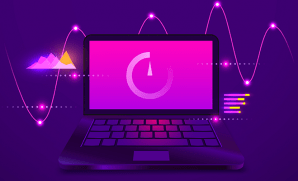These days one can learn simple web designing or coding with Python from books or online tutorials. Yet the next major wave of digital transformation, artificial intelligence (AI), remains limited to a select few – highly trained experts in advanced technologies. Businesses typically need professional data scientists who can actually decipher neural networks and then tailor them. Machine Learning (ML) is today one of the hottest branches of AI – digesting huge amounts of data to recognize patterns, teaching computers to drive autonomous cars, researching cancer, and more.
Also, no matter how many people businesses train, it is not enough to make AI mainstream. As per Deloitte’s latest annual Global Human Capital Trends report, 60% of the global business leaders agreed on the use of AI for assistance. However, only 17% have made any significant investments towards AI reskilling . According to some estimates, only about 10,000 coders in the world have adequate expertise to develop advanced AI algorithms . It is due to this, why many businesses such as AT&T have tried to address this severe AI talent with the aid of innovative point-and-click tools that enable employees to build their own AI applications.
In today’s blog, we will explore one such solution from Microsoft’s Power Platform family – ‘AI Builder’, and the value it drives for businesses. But before directly getting to the AI Builder, let us understand what power platform is and how it works.
Modern app delivery with Power Platform
Microsoft Power Platform is a low-code development solution to enable the last mile of digital transformation. It includes PowerApps (to develop mobile, tablet and desktop-based applications), Power Automate (helps PowerApps in automating the process), and Power BI (intelligence visualization/reporting tool). Power Platform makes it easy to build dashboards, applications, and workflows that your business needs.
The major reason for its popularity is that it is a low code platform that not only reduces the development time but also reduces the development cost significantly. It also supports almost all databases. When manual and paper-based processes slow down the work and lead to errors, PowerApps’ low-code approach saves time, effort, and cost of development. Microsoft’s Common Data Service (CDS) is another cloud-based data storage system that stores data in the form of ‘entities’. ‘Entities’ are similar to tables in any other database system. CDS has some predefined entities and also allows users to create as per requirement.
Other than being easy to manage, secure, access to Dynamics 365 data, and rich metadata, CDS has a more significant role to play when it comes to AI Builder.
Why AI Builder?
Whether you are an experienced developer or business expert, AI Builder helps you intuitively add AI to applications, add human-like capabilities to automate processes and tasks, or even customize your own AI solutions. You can also deploy templates that work right out of the box, adding into your existing applications.
Consider a scenario where you need to develop an application that scans the bills of the customer and fetch some vital information like ‘bill no’, ‘bill date’, ‘billing amount’, and ‘billed to’. Developing this application needs writing a lot of code. But with the help of AI builder, it takes only a few minutes, as AI Builder provides a model for performing the above operation. There are many more common scenario models which are provided by AI builder.
There are mainly two types of AI Builder Models: Custom AI Models, and Prebuilt AI Models.
Prebuilt AI Model
Prebuilt AI models are already trained by Microsoft and provided to the user for direct use in the application. You cannot train the model as per your requirement, but only can just provide the input to the model and get the expected output. You also cannot make any changes or any type of modification in the output. Below are the types of Prebuilt AI Models:
- Business card reader
- Key Phrase extraction
- Language detection
- Text recognition
- Sentiment analysis
Custom AI Model: These models you can choose according to your business requirements and then train according to your business needs by providing the data. Below is the list of custom models available:
- Form processing
- Object detection
- Text classification
- Prediction
A few reasons why enterprises find AI Builder beneficial are:
- It is fast and easy to use
- Brings the power of AI to Power Platform
- Being a low code service, it does not require any knowledge of AI
- Microsoft keeps Power Apps applications lightweight & easy-to-use across all devices
- It removes the dependency of Power Platform on Azure for some of its services
- Comes within a single license with Power Platform
- Is cost-effective as compared to Azure
- Easy to understand, develop and integrate
- Fast and accurate results
- Does not require in-depth testing
Business value from AI Builder
Essentially, AI Builder democratizes the power of AI by putting it into people’s hands pushing your business forward with a ‘point-&-click’ experience and harvesting all your business data and sources on the secure Microsoft platform. Also, the data used by AI Builder gets stored in CDS. AI Builder improves performance by automating the process and even by predicting the results. Microsoft has also provided a turnkey machine learning for common scenarios, which reduces the development cost and efforts by up to 70%.
So while PowerApps makes it easy for you to build applications easily, AI builder provides a way to speed up the process intelligently.


















